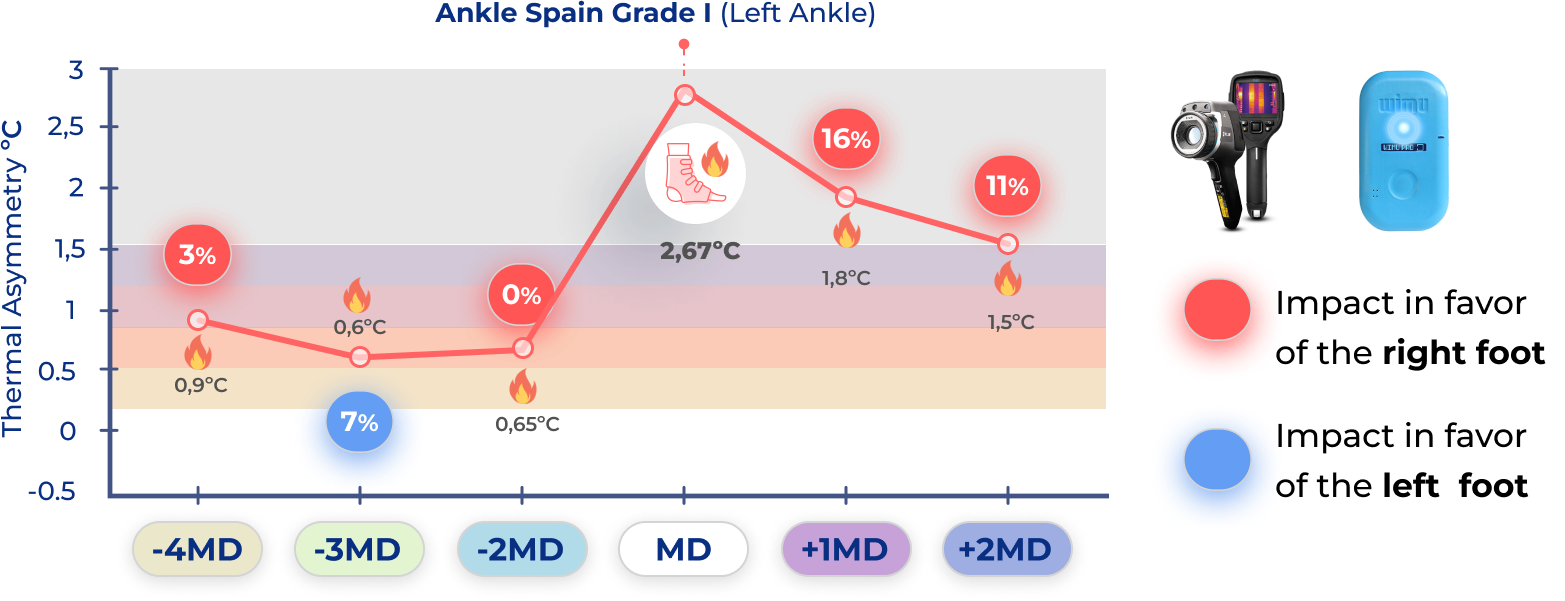Professional Basketball Player Monitoring with GPS and Thermography
In this case study, we bring you the concept of thermography with data extracted from basketball tasks analyzed with WIMU GPS devices. The data was provided by Marcos Cerveró, Sport Scientist at Unicaja Baloncesto. His team works extensively in analyzing the daily training workload in high performance sports.
The thermography analysis shows a state of relative balance in the analysis (-4MD / -3MD / -2MD) before the day of an injury. Thermal asymmetry is a part of surveillance parameters, with a hyperthermic signal towards the ankle likely to be injured, indicating that this structure has a greater demand. If we evaluate the data provided by WIMU three days before the competition, the average thrust force (recorded in N) of the extremities indicates that the left ankle has had 7% more work than the contralateral ankle.

During the match, the devices are not yet allowed so we can not observe GPS data, but the abrupt increase in temperature, measured with thermography, in the left ankle indicates the presence of a pathology that is confirmed by the clinical examination performed by the medical staff . A grade I sprain of the tibiofibular ligament is confirmed which, due to the competitive demands and the absence of loss of function and pain, will be treated with compression, cold, Indiba post-training, isometric exercises, bandaging and increased rotation in training, but the player does not stop his sporting activity.

What is observed on subsequent days, with the increase of 16% and 11% in the values of pushing force with the right leg during training tasks, is that the player will vary his displacement mechanics by exerting greater pushing force on the healthy limb, the right, in order to unconsciously protect the damaged structure.
Therefore, after an injury or a limitation of movement, it is important to assess the compensations that occur in order to evaluate how these biomechanical compensations can affect the other structures and not continue overloading a dysfunctional pattern.
For this purpose, thermography allows us to evaluate the follow-up not only of the injury itself, in this case in the following days a gradual reduction of the temperature accompanied by a reduction of the asymmetry in the impact is observed, but it should also be noted that thermography is serves to control the compensations produced by the functional overload.
The analysis of two days after the injury shows us an alarm, thanks to the development of the alarm system, for the ankle itself and for the opposite ischiosacral, i.e., as described by Piñonosa et al 2016, the anticipation of the deceleration of the body with the same step length by leaving more impact, predominantly requires an increase in the activity of the ischiosacral complex (Colné & Thoumie, 2006).
Article by Thermohuman, May 2022.